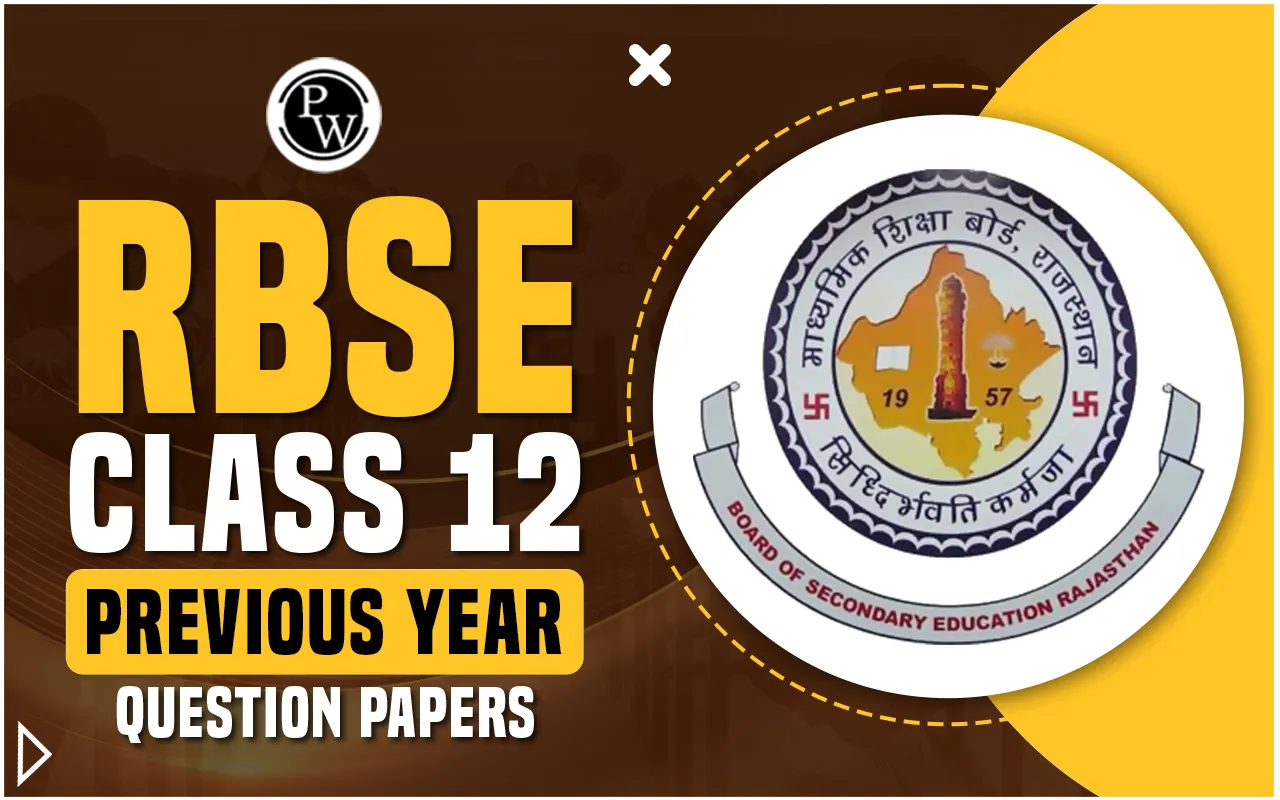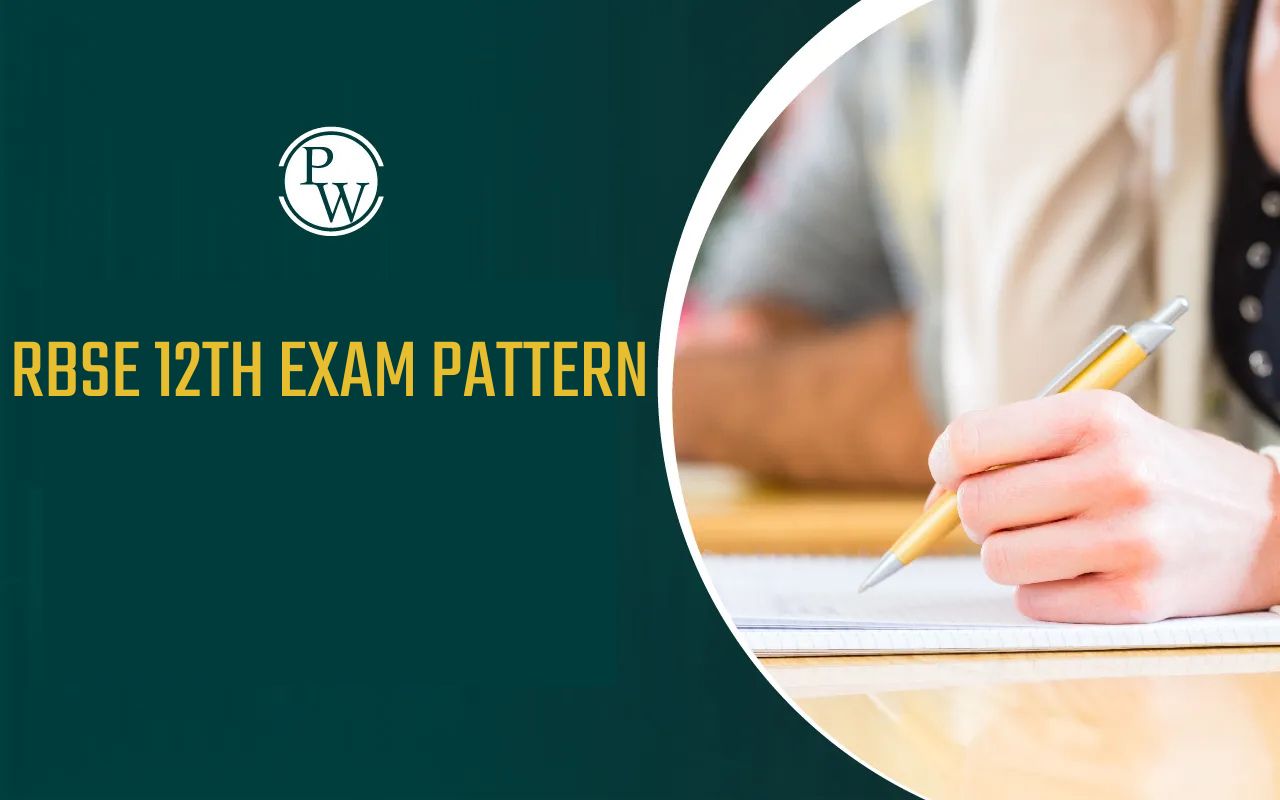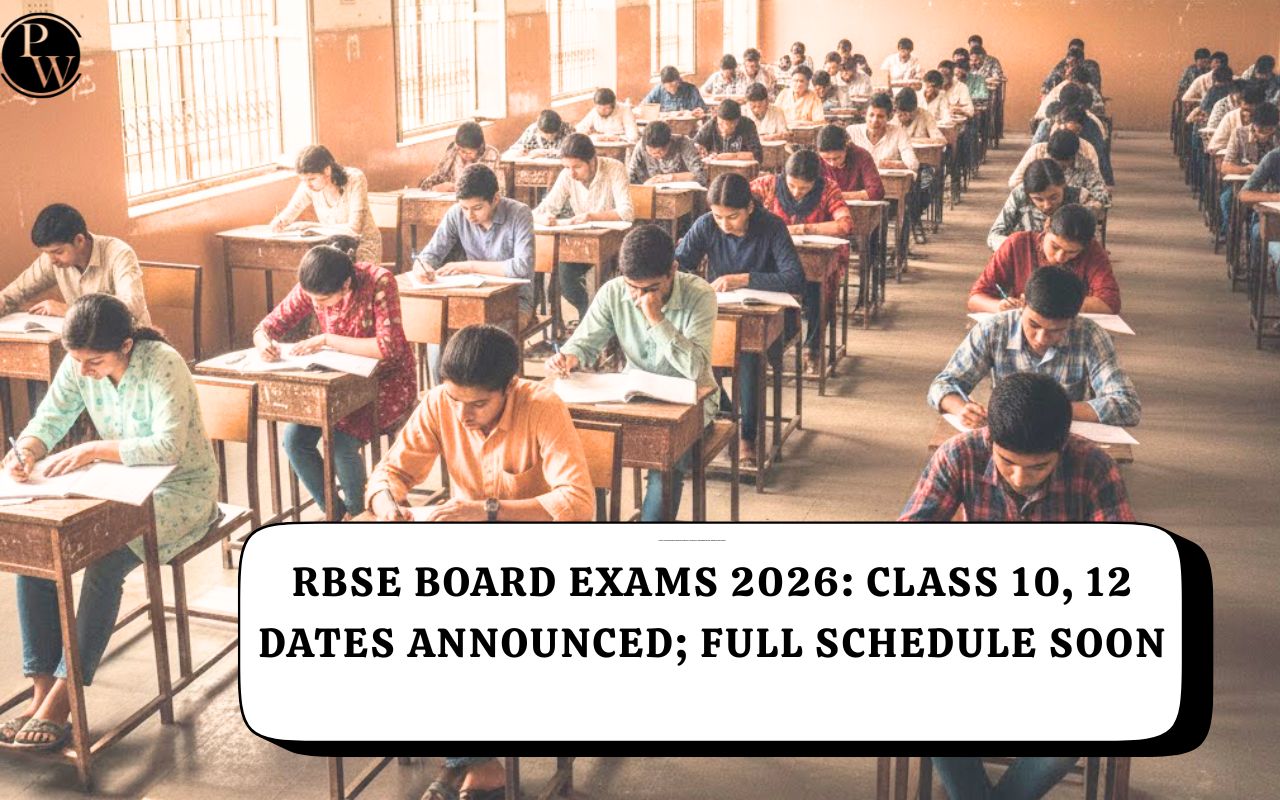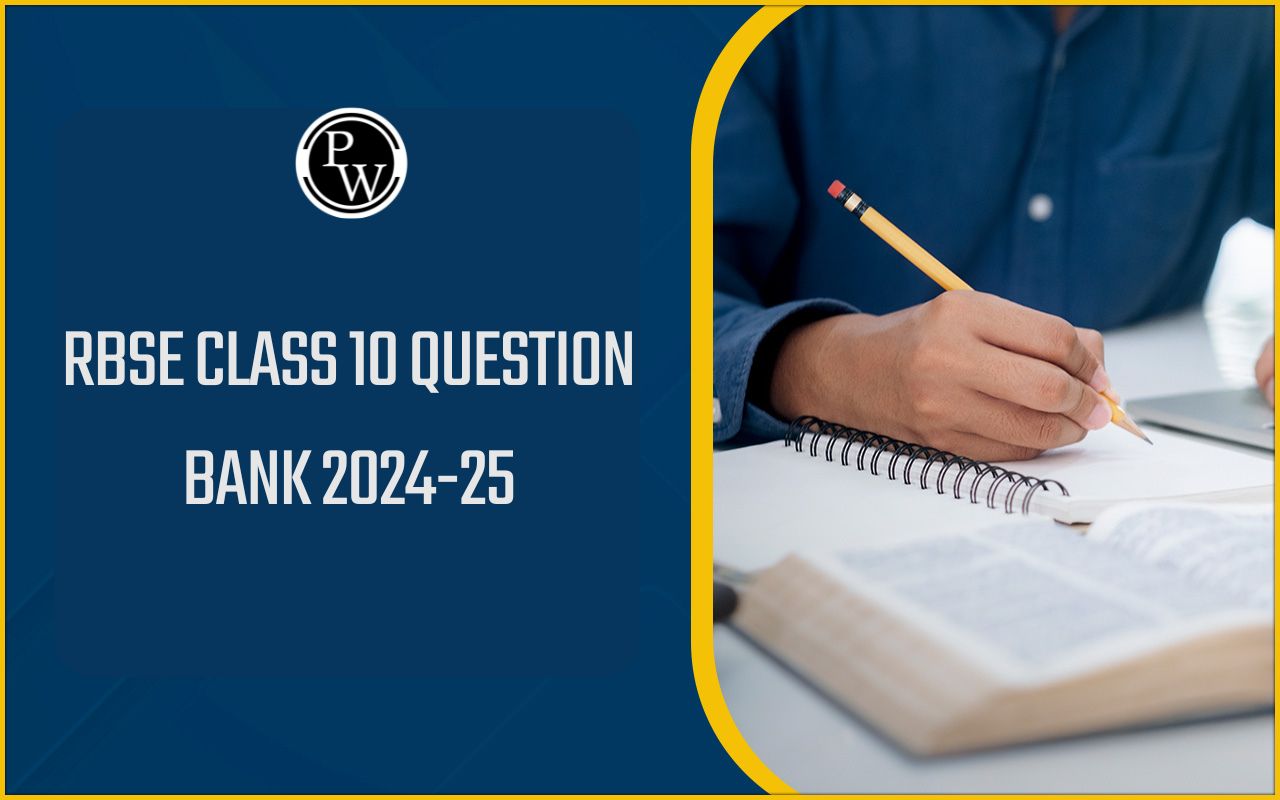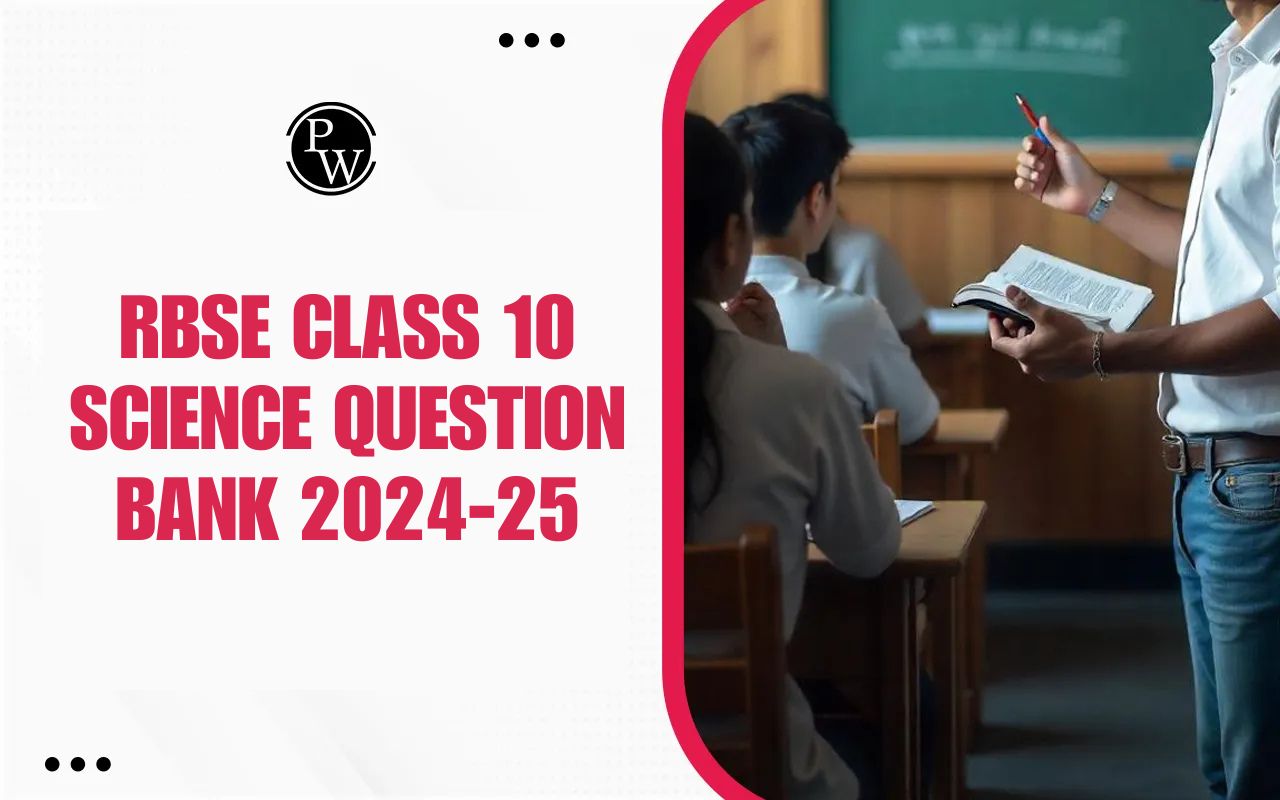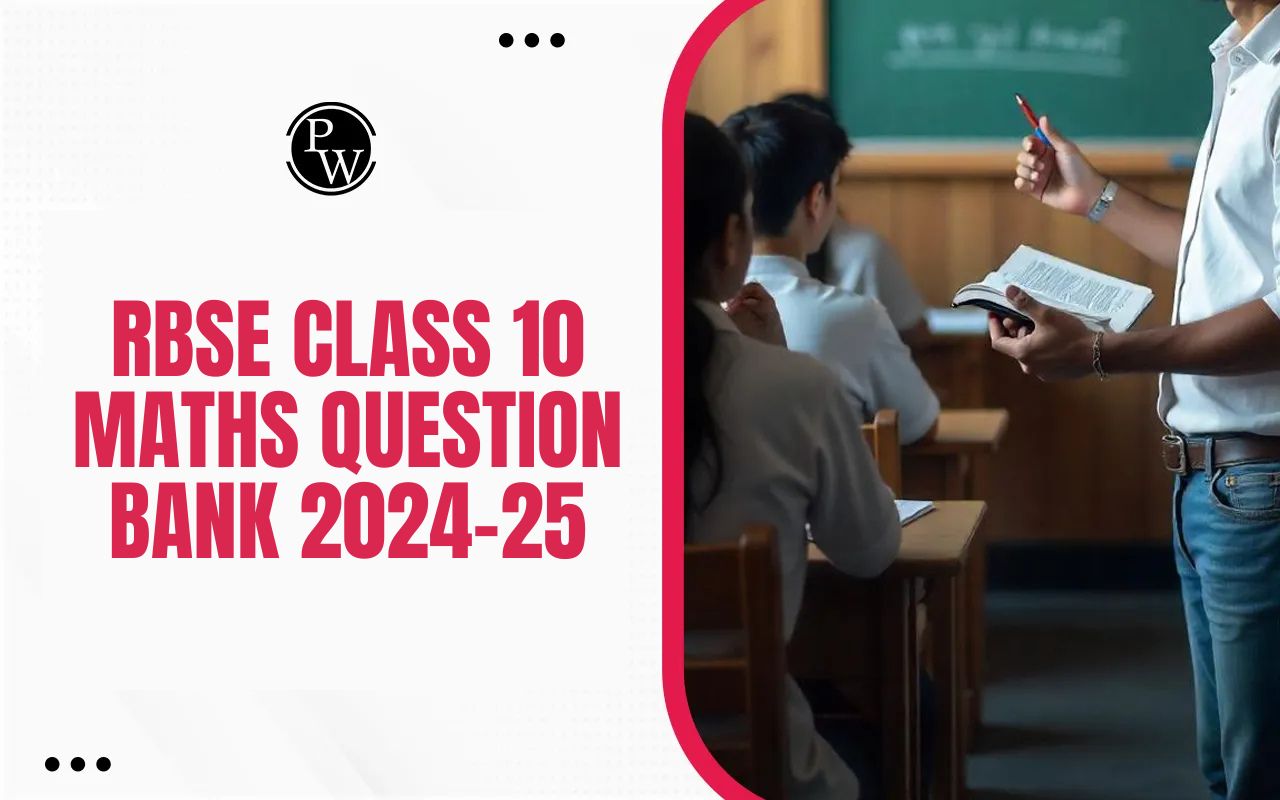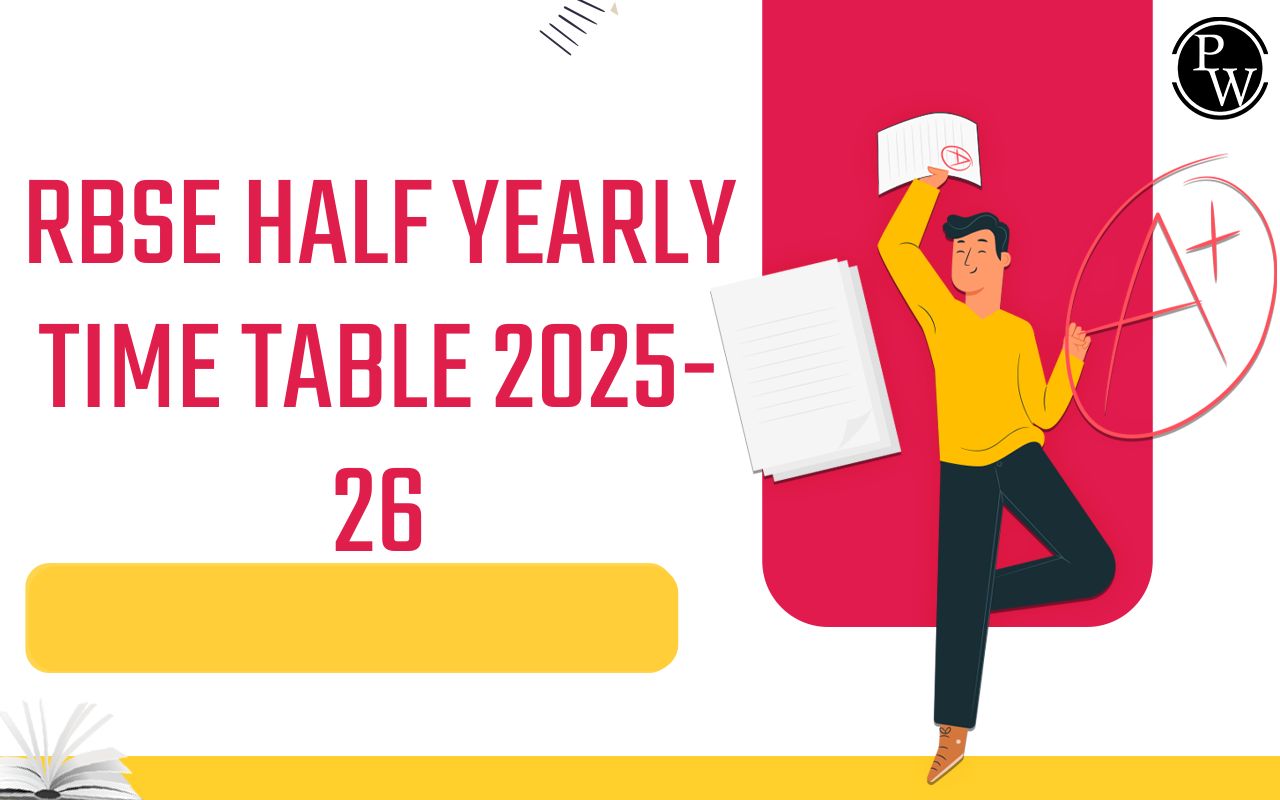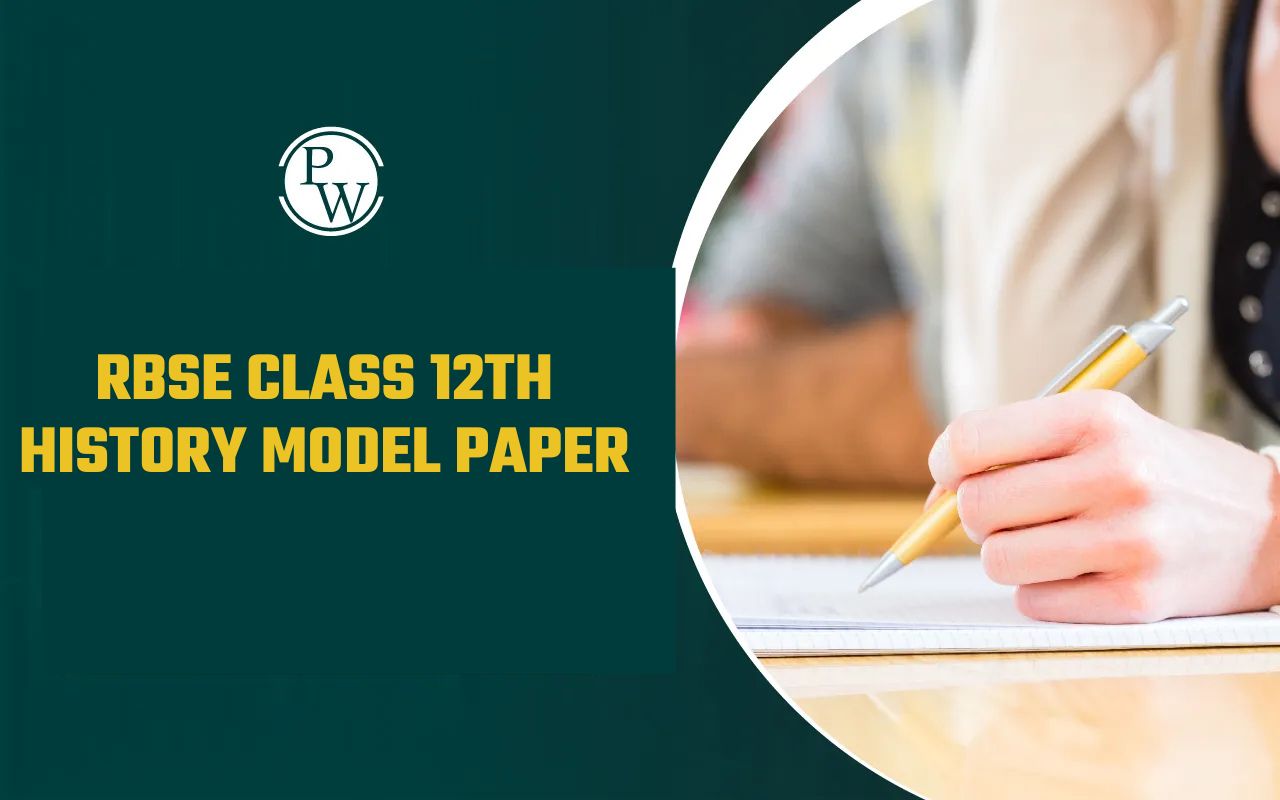
RBSE 12th Class History Syllabus 2025-26: The Rajasthan Board of Secondary Education (RBSE), Ajmer has officially released the RBSE Class 12 History Syllabus for the academic session 2025–26. This syllabus will give students a deep insight into the political, economic, cultural, and social transformations in India from ancient to modern times.
The syllabus is divided into three parts, the course captures significant historical developments and interpretations that are essential for understanding India's past and present.
The RBSE 12th Syllabus not only helps students prepare for board exams but also develops their critical thinking and analytical skills.
It covers a range of topics like the Harappan Civilization, Mahabharata interpretations, Bhakti-Sufi traditions, the Revolt of 1857, and Gandhi’s role in the freedom struggle. It aligns closely with NCERT's "Themes in Indian History" books.
RBSE 12th Class History Syllabus 2025-26 Overview
RBSE 12th Class History Syllabus 2025-26 is divided into three parts with a combination of written exams and practical map work. It aligns with NCERT resources and emphasizes both theoretical knowledge and interpretation of historical sources.
|
RBSE 12th Class History Syllabus 2025-26 Overview |
|
|
Particular |
Details |
|
Board |
Rajasthan Board of Secondary Education (RBSE) |
|
Class |
12th |
|
Subject Name |
History |
|
Subject Code |
13 |
|
Total Time |
3 hours 15 minutes |
|
Maximum Marks |
100 (Written: 80 + Practical: 20) |
RBSE 12th Class History Syllabus 2025-26 Exam Pattern
The RBSE 12th exam pattern for History aims to assess students on their knowledge of key historical events, critical analysis, and map work skills. The paper is divided into three parts: Themes in Indian History Part I, II, and III. Each theme includes specific chapters focusing on different historical periods and events.
The paper is of 100 marks, with 80 marks for the written examination and 20 marks allocated for map-based practical assessment. Objective, short answer, and long answer questions are included in the written exam paper. This way students are evaluated on conceptual understanding and factual accuracy.
RBSE Class 12th English Syllabus
RBSE 12th Class History Syllabus 2026 Download PDF
With clear chapter-wise breakdowns, the RBSE 12th History syllabus will help students focus on key areas and prioritize topics based on their weightage. The syllabus also includes essential components like map work, practicals, and source-based questions. It is important to have a hard copy of the syllabus for effective exam preparation. You can download the syllabus from here:
RBSE Class 12th History Syllabus 2025-26
Study without using the internet
RBSE 12th Class History Syllabus 2026 Marking Scheme
The RBSE 12th Class History Syllabus 2026 follows a clear and structured marking scheme to help students focus on the right areas during preparation. The theory paper carries a total of 80 marks, while the remaining 20 marks are allotted for internal assessment.
The 80-mark written exam includes various types of questions. The questions are based on the units prescribed in the syllabus, which cover themes of Indian history like ancient civilizations, empires, colonial rule, and independence movements.
RBSE 12th Class History Syllabus 2026 Marking scheme ensures that students focus on understanding the concepts thoroughly. The theory paper includes short and long answer questions from 12 themes across 3 parts. Here’s the marking scheme:
|
RBSE 12th Class History Syllabus 2026 Marking scheme |
|||
|
Part |
Theme No. |
Chapter Title |
Marks Allotted |
|
Part I |
Theme 1 |
Bricks, Beads and Bones |
7 Marks |
|
Theme 2 |
Kings, Farmers and Towns |
6 Marks |
|
|
Theme 3 |
Kinship, Caste and Class |
6 Marks |
|
|
Theme 4 |
Thinkers, Beliefs and Buildings |
7 Marks |
|
|
Total (Part I) |
26 Marks |
||
|
Part II |
Theme 5 |
Through the Eyes of Travellers |
6 Marks |
|
Theme 6 |
Bhakti-Sufi Traditions |
7 Marks |
|
|
Theme 7 |
An Imperial Capital: Vijayanagara |
6 Marks |
|
|
Theme 8 |
Peasants, Zamindars and the State |
6 Marks |
|
|
Total (Part II) |
25 Marks |
||
|
Part III |
Theme 9 |
Colonialism and the Countryside : Exploring Official Archives |
6 Marks |
|
Theme 10 |
Rebels and the Raj : The Revolt of 1857 and Its Representations. |
6 Marks |
|
|
Theme 11 |
Mahatma Gandhi and the Nationalist Movement : Civil Disobedience and Beyond |
7 Marks |
|
|
Theme 12 |
Framing the Constitution : The Beginning of a New Era |
6 Marks |
|
|
Total (Part III) |
25 Marks |
||
|
Map Work |
Based on Themes 7, 12, and 13 (locations & regions) |
4 Marks |
|
|
Grand Total |
80 Marks |
||
RBSE Class 12th English Syllabus
RBSE 12th Class History Syllabus 2026 Unit-Wise
Here is a detailed RBSE 12th Class History Syllabus 2025-26 unit-wise syllabus to help you prepare for the board exams properly:
Themes in Indian History Part-I
Part –I Theme (1-4)
Theme 1: Bricks, Beads and Bones: The Harappan Civilisation- Beginnings, Subsistence Strategies –Agricultural technologies, Mohenjodaro-A Planned Urban Centre, Laying out drains, Domestic architecture, The Citadel,Tracking Social Differences-Burials, Looking for Luxuries, Finding Out About Craft-Production-Identifying centres of production, Strategies for Procuring Materials - Materials from the subcontinent and beyond,Contact with distant lands, Seals, Script, Weights- Seals and sealings, An enigmatic script, Weights, Ancient AuthorityPalaces and kings, The End of the Civilisation, Discovering the Harappan Civilisation- Cunningham's confusion, A new old civilisation, New techniques and Questions, Problems of Piecing Together the Past- Classifying finds, Problems of interperetation.
Theme 2: Kings, Farmers and Towns: Early States and Economies (C. 600 BCE-600 CE) Prinsep and Piyadassi, The Earliest States –The sixteen mahajanapadas, First amongst the sixteen : Magadha , An Early Empire- Finding out about the mauryas, Administering the empire , Importance of Maurya Empire, New Notions of Kingship- Chiefs and Kings in the south , Divine kings , A Changing Countryside, Popular perceptions of kings , Strategies for increasing production, Differences in rural society, Land grants and new rural elites, Towns and Trade – New cities, Urban populations : Elites and Craftspersons, Trade in the subcontinent and beyond,Coins and kings, Back to basics: inscriptions deciphered, Deciphering Brahmi, Kharosthi Script, Historical evidence from inscriptions, The Limitations of Inscriptional Evidence.
Theme 3: Kinship, Caste and Class: Early Societies (C. 600 BCE-600 CE)- The Critical Edition of the Mahabharata , Kinship and Marriage ; Many Rules and Varied Practices – Finding out about families, The ideal of patriliny, Rules of marriage, The gotra of women, Importance of Mothers, Social Differences: Within and Beyond the Framework of Caste- The right occupation, Non-kshatriya kings, Jatis and social mobility, Beyond the four varnas : Integration, Beyond the four varnas : Subordination and conflict , Beyond Birth : Resources and status- Gendered access to property, Varna and access to property, An alternative social scenario : Sharing wealth, Explaining Social Differences: A Social Contract, Handling Texts : Historians and the Mahabharata – Language and content, Author and dates, The search for convergence, A Dynamic Text.
Theme 4: Thinkers, Beliefs and Buildings: Cultural Developments (C. 600 BCE-600 C.E)- A Glimpse of Sanchi,The Background: Sacrifices and Debates- The sacrificial tradition, New questions, Debates and discussions, Beyond Worldly Pleasures : The Message of Mahavira – The spread of jainism , The Buddha and the Quest for Enlightenment, The Teachings of the Buddha, Followers of the Buddha, Stupas – Construction of stupas, The structure of the stupa, Discovering Stupas : The Fate of Amaravati and Sanchi, Sculpture – Stories in stone, symbols of worship, Popular traditions, New Religious Traditions – The development of mahayana Buddhism, The growth of puranic Hinduism, Building temples, rich visual traditions of the past, Grappling with the unfamiliar, Text and image do not match.
Themes in Indian History Part-II
Part –II Theme (5-8)
Theme 5: Through the Eyes of Travellers : Perceptions of Society (C.Tenth to Seventeenth Century)- Al-Biruni and the Kitab-ul-Hind – From Khwarizm to the Punjab, The Kitab-ul-Hind, Ibn Battuta’s Rihla – An early globe-trotter, The "enjoyment of curiosities", François Bernier : A Doctor with a Difference –Comparing "East"and "West" , Making Sense of an Alien World : Al-Biruni and the SanskriticTradition – Overcoming barriers to understanding, Al-Biruni's description of the caste system , Ibn-Battuta and the excitement of the Unfamiliar – The coconut and the paan, Ibn Battuta and Indian cities, A unique system of communication,. Bernier and the Degenerate East - landownership, A more complex social reality, Women : Slaves, Sati and Labourers.
Theme 6: Bhakti-Sufi Traditions : Changes in Religious Beliefs and Devotional Texts (C. Eighth to Eighteenth Century): A Mosaic of Religious Beliefs and Practices – The integration of cults, Difference and conflict, Poems of Prayer Early Traditions of Bhakti – The alvars and Nayanars of Tamil Nadu, Attitudes towards caste, Women devotees, Relastions with the state, The Virashaiva Tradition in Karnataka, Religious Ferment in North India, New Strands in the Fabric- Islamic Traditions – Faiths of rulers and subjects, The popular practice of Islam, Names for communities, The Growth of Sufism – Khanqahs and silsilas, Outside the Khanqah, The Chishtis in the Subcontinent – Life in the chishti khanqah, Chishti devotionalism : Ziyarat and qawwali, Languages and communication, Sufis and the state, New Devotional Paths Dialogue and Dissent in Northern India – Weaving a divine fabric : Kabir, Baba Guru Nanak and the sacred Word, Mirabai , the devotee princess, Reconstructing Histories of Religious Traditions.
Theme 7: An Imperial Capital : Vijayanagara (c. Fourteenth to Sixteenth Century)- The Discovery of Hampi, Rayas, Nayakas and Sultans – Kings and traders, The apogee and decline of the empire, The rayas and the nayakas, Vijayanagara The Capital and its Environs - Water resoures, Fortifications and roads, The urban core , The Royal Centre- The mahanavami dibba, Other buildings in the royal centre, The Sacred Centre – Choosing a capital, Gopurams and mandapas, Plotting Palaces, Temples and Bazaars, Study fo protected buildings.
Theme 8: Peasants, Zamindars and the State : Agrarian Society and the Mughal Empire (c. SixteenthSeventeenth Centuries)- Peasants and Agricultural Production – Looking for sources, Peasants and their lands, Irrigation and technology,An abundance of crops, The Village Community – Caste and the rural milieu, Panchayats and headmen, Village artisans, A little rpublic, Women in Agrarian Society, Forests and Tribes - Beyond settled villages, Inroads into forests, The Zamindars, Land Revenue System, The Flow of Silver, The Ain-i Akbari of Abu’l Fazl Allami.
Themes in Indian History Part-III
Part –III- Theme (9-12)
Theme 9: Colonialism and the Countryside : Exploring Official Archives- Bengal and the Zamindars – An auction in Burdwan,The problem of unpaid revenue, Inability of zamindars to payments, The rise of the Jotedars, The zamindars resist, The Fifth Report, The Hoe and the Plough- In the hills of Rajmahal, The Santnals : Poineer settlers, The accounts of Buchanan, A Revolt in the Countryside : The Bombay Deccan – Account books are burnt,A new revenue system, Revenue demand and peasant debt, Cotton boom, Credit dries up, The experience of injustice, The Deccan Riots Commission
Theme 10: Rebels and the Raj : The Revolt of 1857 and Its Representations- Pattern of the Rebellion –The mutinies, Lines of communication, Leaders and followers, Rumours and porphecies, Poople believing in rumours, Awadh in Revolt- Firangi raj and the end of a world, The desire of the rebels - The vision of unity, Against the symbols of opperession, The search for alternative power, Repression, Images of the Revolt-Celebrating the saviours, English women and the honour of Britain, Vegeance and retribution, The performance of terror , No time for clemency, Nationalist imageries.
Theme 11: Mahatma Gandhi and the Nationalist Movement: Civil Disobedience and Beyond- A Leader Announces Himself , The Making and Unmaking of Non-cooperation – Knitting a popular movement,A people's leader, The Salt Satyagraha : A Case Study – Dandi, Dialogues, Quit India, The Last Heroic Days , Knowing Gandhi – Public voice and private scripts, Framing a picture, Through police eyes, From newspapers.
Theme 12: Framing the Constitution: The Beginning of a New Era- A Tumultuous Time - The making of the constituent Assembly, The dominant voices , The Vision of the Constitution – The will of the people, Defining Rights - The problem with separate electorates, The Powers of the State- The Language of the Nation – A plea for hindi, The fear of domination.
RBSE 12th Class Geography Syllabus
RBSE 12th Class History Syllabus 2026 Practical Assessment
RBSE 12th Class History Syllabus 2026 Practical Assessment is allotted 20 marks, focusing on the identification and plotting of important historical locations on the map of India. It evaluates the student’s understanding of historical developments like trade routes, capitals, empires, archaeological sites, etc.
Students must refer to the NCERT maps and study significant places mentioned in each chapter. The practical exam will be conducted separately and includes internal assessments.
RBSE 12th Class History Syllabus 2026 Recommended Books
The following NCERT books are recommended as the official source for RBSE Class 12 History preparation:
-
Themes in Indian History – Part I
-
Themes in Indian History – Part II
-
Themes in Indian History – Part III
These books are published under copyright by NCERT and contain detailed chapters with illustrations, source extracts, and exercises. They are essential for understanding both content and exam patterns.
How to Prepare for the RBSE 12th Class History Exam 2025?
Here are some effective RBSE Class 12th Preparation Tips for the History exam 2025:
-
Study from the NCERT Textbook:
RBSE 12th History syllabus is based on the NCERT book, so make it your primary resource. Read each chapter carefully, focusing on key events, movements, and their historical relevance. -
Create Topic-wise Notes:
While studying, prepare notes for each chapter that include important events, dates, key personalities, and their contributions. Proper notes will help you in quick revision and save time during the final exam preparation. -
Use Timelines and Flowcharts:
History includes many sequences and developments over time. You can create timelines and flowcharts to connect events like the rise and fall of empires or phases of the freedom struggle. This will make it easier for you to memorise. -
Solve Previous Years' Papers:
Practicing RBSE Class 12 Previous Year Question Papers will help you understand the types of questions asked, marking scheme, and frequently repeated topics. It will also improve your speed and accuracy in writing descriptive answers. -
Improve Writing Style:
In history, it’s important to present facts in a structured and coherent manner. Practice writing answers with clear introductions, chronological explanations, and precise conclusions, using appropriate historical terms.
| Other Important Links: | |
| RBSE 12th Toppers List 2025 | RBSE 10th Toppers List 2025 |
| RBSE 12th Result 2025 | RBSE Board 10th Result 2025 |
RBSE 12th Class History Syllabus 2025-26 FAQs
Is class 12 2025-26 syllabus released?
Yes, the RBSE Class 12th 2025-26 syllabus has been released. Students must download the updated syllabus for this year from the official website of RBSE: rajeduboard.rajasthan.gov.in/.
Is the RBSE syllabus changed?
There are slight changes in the RBSE 12th syllabus 2025-26. You must download the syllabus from the official website and keep a hard copy to keep a track of your preparation.
What are the marks of RBSE board paper?
RBSE Class 12th boards written exam carries 80 marks and the practical assessment carries 20 marks. Students must refer to the syllabus to understand the marking scheme for each subject.
What is the minimum passing marks for 12th RBSE exam?
The minimum passing marks for 12th RBSE exam is 33 marks. Students must prepare well for the board examinations by referring to the syllabus, previous years’ papers to understand the exam pattern and question types.

